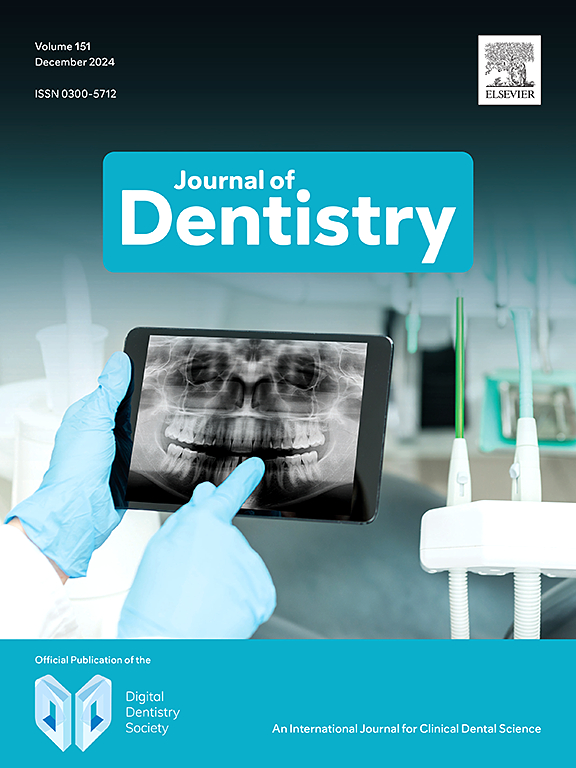Household income trajectory effect on oral health-related quality of life during the transition from childhood to adolescence
IF 4.8
2区 医学
Q1 DENTISTRY, ORAL SURGERY & MEDICINE
引用次数: 0
Abstract
Objective
To measure the effect of household income trajectory on oral health-related quality of life (OHRQoL) during the transition from childhood to adolescence over 10-years.
Methods
This cohort study assessed 639 children aged 1–5 years in 2010 in Santa Maria, southern Brazil. After 10 years, the same participants were re-evaluated. Familiar household income was collected in both assessments. Four groups with different income trajectories were created by cluster analysis: “stable low income”, “decreasing income”, “increasing income”, and “stable high income”. OHRQoL was measured at follow-up using the short version of CPQ11-14. Demographic, and oral health-related information were also collected. A negative binomial regression analysis with robust variance was conducted.
Results
A total of 351 (54.9 % of the original sample) participants with household income data at the baseline and follow-up were analyzed. Socioeconomic mobility and income remained the same for most of the participants over the 10 years. Participants belonging to the "stable high income" category presented 37 % less risk of having a worse OHRQoL than participants belonging to the "stable low income" category. Groups that experienced changes in their income trajectories did not show significant changes in OHRQoL.
Conclusions
Individuals with stable high income over time were protected from having impacts on their OHRQoL. Worsening or improvement in income over time do not influence OHRQoL.
Clinical significance
Our findings indicate that socioeconomic factors impact subjective patient outcomes, which are considered a fundamental aspect of clinical practice.
求助全文
约1分钟内获得全文
求助全文
来源期刊

Journal of dentistry
医学-牙科与口腔外科
CiteScore
7.30
自引率
11.40%
发文量
349
审稿时长
35 days
期刊介绍:
The Journal of Dentistry has an open access mirror journal The Journal of Dentistry: X, sharing the same aims and scope, editorial team, submission system and rigorous peer review.
The Journal of Dentistry is the leading international dental journal within the field of Restorative Dentistry. Placing an emphasis on publishing novel and high-quality research papers, the Journal aims to influence the practice of dentistry at clinician, research, industry and policy-maker level on an international basis.
Topics covered include the management of dental disease, periodontology, endodontology, operative dentistry, fixed and removable prosthodontics, dental biomaterials science, long-term clinical trials including epidemiology and oral health, technology transfer of new scientific instrumentation or procedures, as well as clinically relevant oral biology and translational research.
The Journal of Dentistry will publish original scientific research papers including short communications. It is also interested in publishing review articles and leaders in themed areas which will be linked to new scientific research. Conference proceedings are also welcome and expressions of interest should be communicated to the Editor.
 求助内容:
求助内容: 应助结果提醒方式:
应助结果提醒方式:


